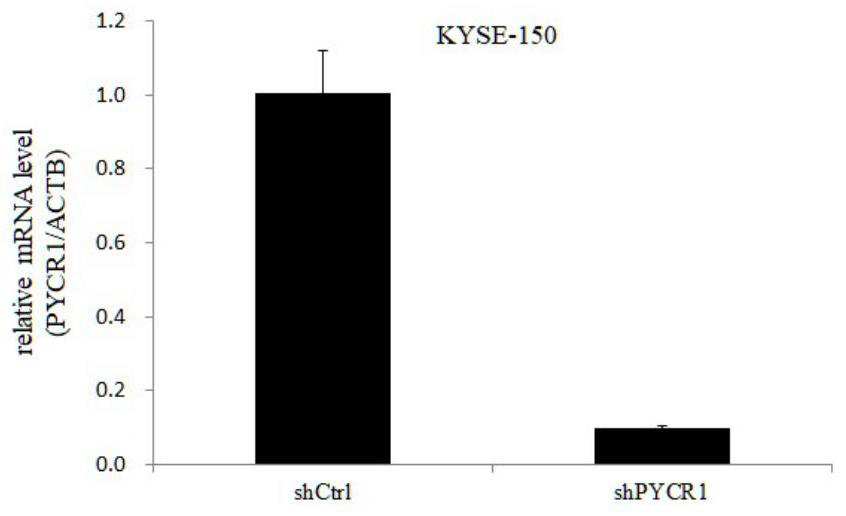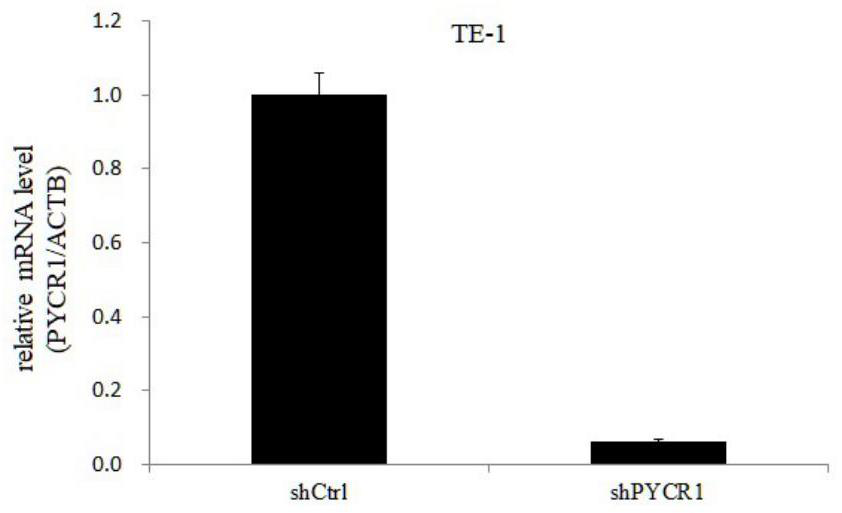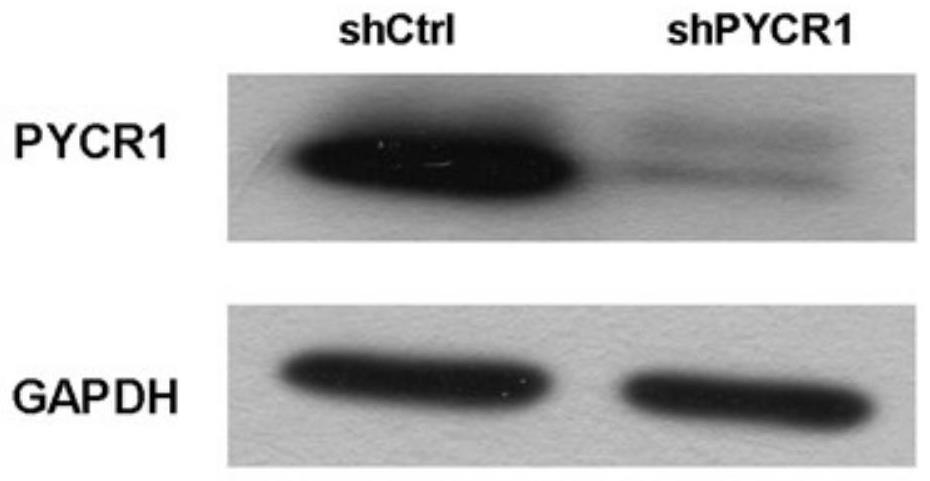Application of PYCR1 gene as target in preparation of esophageal cancer product and related product
A technology of esophageal cancer and genes, applied in the field of biomedical research, can solve the problem of unknown role of PYCR1, and achieve the effect of promoting apoptosis, inhibiting proliferation, and inhibiting invasion and metastasis of esophageal cancer cells
- Summary
- Abstract
- Description
- Claims
- Application Information
AI Technical Summary
Problems solved by technology
Method used
Image
Examples
Embodiment 1
[0112] Example 1 Preparation of RNAi lentivirus against human PYCR1 gene
[0113] 1. Screening for effective siRNA targets against the human PYCR1 gene
[0114] Retrieve PYCR1 (NM_001282281) gene information from Genbank; design effective siRNA targets for PYCR1 gene. According to the principle of RNA interference sequence design, multiple 19-21nt RNA interference target sequences were designed using the CCT7 gene as a template. After evaluation and determination by design software, the following sequences were selected as interference targets (Table 1-1).
[0115] Table 1-1 is targeted at the siRNA target sequence of human PYCR1 gene
[0116]
[0117] 2. Preparation of lentiviral vector
[0118] Synthesize double-stranded DNA Oligo sequences (Table 1-2) containing Age I and EcoR I restriction endonucleases at both ends of the siRNA target site; act on the GV493-gcGFP vector (Shanghai (provided by Jikai Gene Chemical Technology Co., Ltd.) to make it linearized, and agar...
Embodiment 2
[0138] Example 2 Real-time fluorescent quantitative RT-PCR method to detect gene silencing efficiency
[0139] Human esophageal cancer KYSE-150 cells and human esophageal cancer TE-1 cells in logarithmic growth phase were digested with trypsin to make cell suspension (the number of cells was about 5×10 4 / ml) were inoculated in a 6-well plate and cultured until the cell confluency reached about 30%. According to the multiplicity of infection value (MOI, A549:10), an appropriate amount of PYCR1-siRNA lentivirus prepared in Example 1 was added to the experimental group, and the control lentivirus was added to the control group, and the culture medium was replaced after 24 hours of cultivation, until the infection time reached 5 Days later, cells were collected. Total RNA was extracted according to the instruction manual of Invitrogen's Trizol. According to the M-MLV instruction manual of Promega Company, RNA was reverse-transcribed to obtain cDNA (see Table 2-1 for the reverse...
Embodiment 3
[0148] Example 3 Western Blotting method to detect gene silencing efficiency
[0149] 1. Extraction of total cell protein
[0150] (1) Preparation of virus-infected cells: prepare human esophageal cancer target cells KYSE-150 and TE-1 in the logarithmic growth phase and trypsinize them respectively to make cell suspensions (the number of cells is about 5×10 4 / ml) were seeded in 6-well plates and cultured until the cell confluency reached about 30%. According to the multiplicity of infection (MOI, A549:10), an appropriate amount of the RNAi virus (PYCR1-siRNA lentivirus) prepared in Example 1 against the PYCR1 interference target was added to the experimental group, and the control lentivirus was added to the control group, and replaced after 24 hours of cultivation medium, infected for 5 days.
[0151] Then, the cell samples were received and washed twice with PBS. Take an appropriate amount of RIPA lysate, add PMSF within a few minutes before use, so that the final concen...
PUM
 Login to View More
Login to View More Abstract
Description
Claims
Application Information
 Login to View More
Login to View More - R&D
- Intellectual Property
- Life Sciences
- Materials
- Tech Scout
- Unparalleled Data Quality
- Higher Quality Content
- 60% Fewer Hallucinations
Browse by: Latest US Patents, China's latest patents, Technical Efficacy Thesaurus, Application Domain, Technology Topic, Popular Technical Reports.
© 2025 PatSnap. All rights reserved.Legal|Privacy policy|Modern Slavery Act Transparency Statement|Sitemap|About US| Contact US: help@patsnap.com



